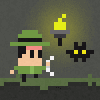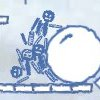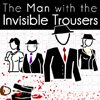People think in patterns. Thousands and thousands of years ago our ancestors looked at the night sky and saw not just stars there but heroes, animals, vehicles and so on. Now the sky is divided into 88 constellations.
Frankly speaking, the constellations’ shapes vaguely correspond to their names. For example Ursa Major (Great Bear) looks like a dipper more than like a bear. But what if the stars formed the shapes almost similar to our surrounding objects? As they are located in three-dimensional space, the matter would be just in finding the proper point of view. You can find such a point and enjoy the picturesque sky if you play Starlight, the great game by Kostiantyn Stankevych.
Frankly speaking, the constellations’ shapes vaguely correspond to their names. For example Ursa Major (Great Bear) looks like a dipper more than like a bear. But what if the stars formed the shapes almost similar to our surrounding objects? As they are located in three-dimensional space, the matter would be just in finding the proper point of view. You can find such a point and enjoy the picturesque sky if you play Starlight, the great game by Kostiantyn Stankevych.







